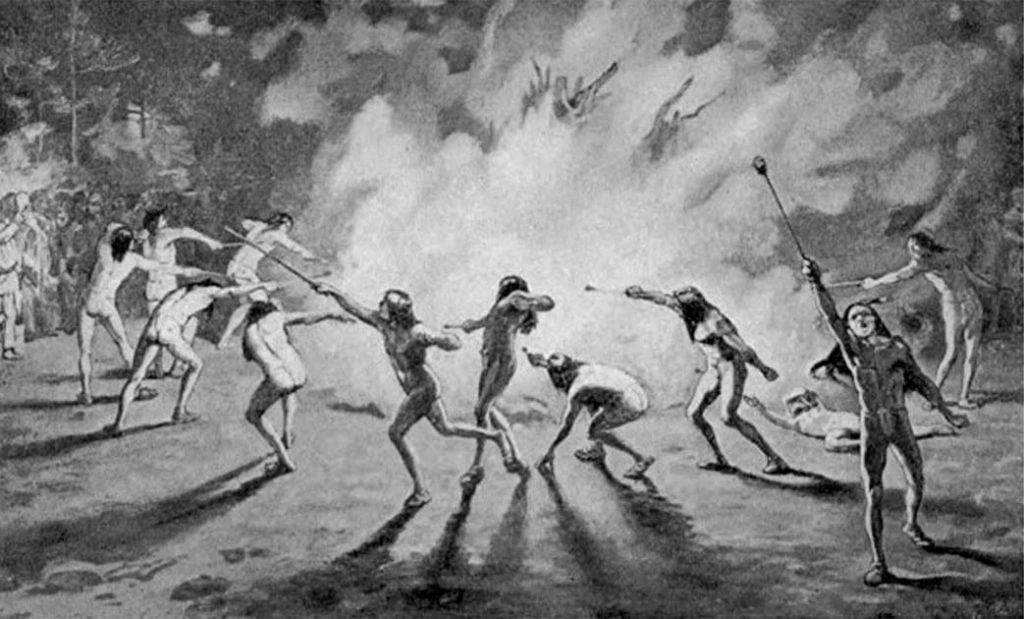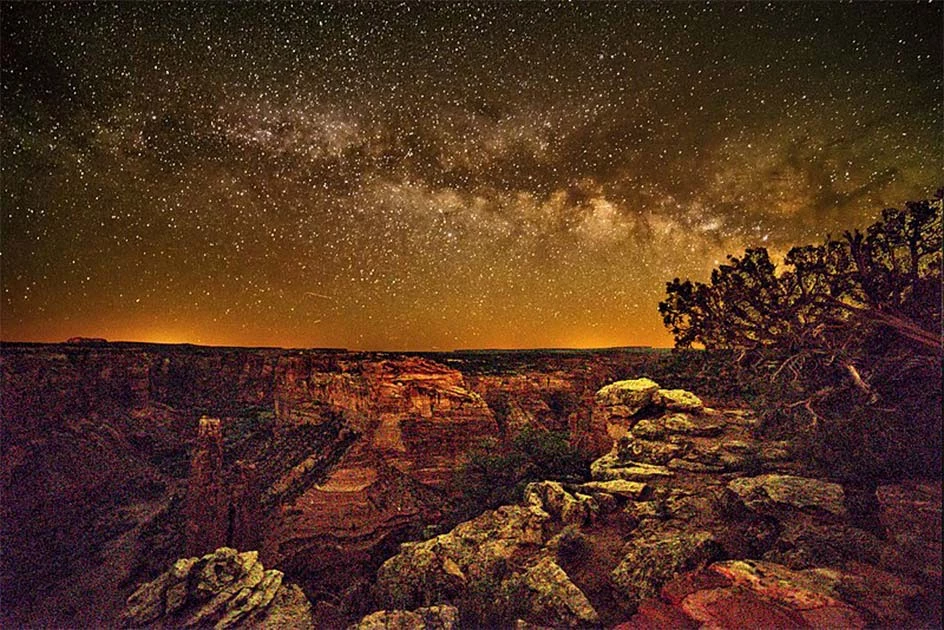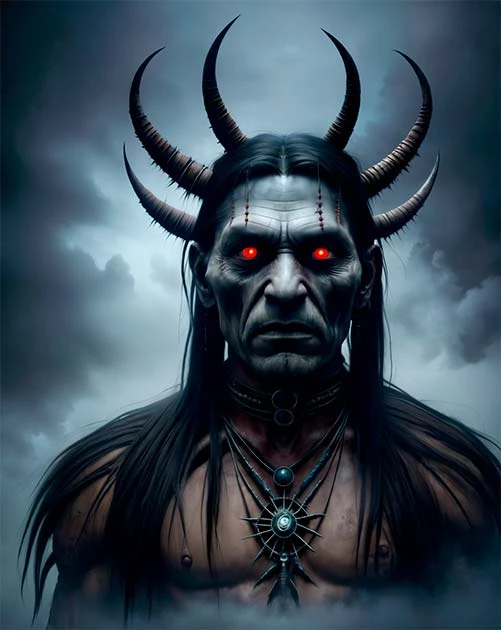Native American folklore has its fair share of monsters, but one chilling figure stands out: a being of pure malevolence with the ability to transform at will. Known as the skin-walker, these mysterious creatures are steeped in the rich tapestry of Navajo mythology, where their sinister presence sends shivers down the spine of those who dare to speak of them.
What makes them so terrifying? A look at their eerie abilities, haunting appearances, and the unsettling legends that surround them will leave no doubts as to why people in the United States are still claiming to see these creatures today.
What Are Skin-walkers?
Skin-walkers are mysterious supernatural creatures rooted in traditional Navajo folklore. In a nutshell, they’re malevolent witches with the ability to shapeshift, amongst other abilities. In particular, they’re known for their ability to don the skins of animals and other humans (hence their name) and adopt their forms.
This transformation isn’t perfect, however. Descriptions of Skin-walkers can vary but they are commonly associated with having sinister or unsettling features, in particular having “human” eyes rather than those of an animal. Modern interpretations also have them walking on two legs while in animal form and moving at supernatural speeds.

Their powers are also said to go beyond just shapeshifting. According to folklore, they can mimic the sounds and behaviors of the creatures they imitate, making them elusive and difficult to detect. As witches they also wield dark magic which they use to inflict harm upon others. In particular, it is said they can control minds by meeting someone’s gaze and even cause death via curses.
The most unsettling aspect of Skin-walkers is their ability to blend seamlessly with their surroundings, making them formidable adversaries in Navajo lore. In some folklore, they are almost unkillable, and it is said they can only be defeated with the help of a powerful shaman.
Other, more recent tales claim a bullet dipped in white ash or a silver blade can kill them. Of course, since the Navajo didn’t have access to firearms for centuries this is likely a modern embellishment.
So, definitely not something anyone wants to run into on a dark night. This raises the question, where can they be found? Well, they’re most frequently associated with the Navajo Nation, a vast territory spanning the Southwestern United States. Within this region, the legends and tales of Skin-walkers are deeply embedded in the cultural fabric of the Navajo people.
- Wendigo: Cannibal Beast of Native American Legend
- Hunting the Tikbalang, Spindly Horse Monster of the Philippines
Skin-walkers are said to roam the remote and desolate areas of the Navajo reservation. They are said to inhabit the empty, arid landscapes of the United States: Arizona, New Mexico, Utah, and Colorado, stalking their prey under the cover of night. These desolate terrains, with their wide expanses and eerie silence, provide the perfect backdrop for the mysterious and sinister presence of Skin-walkers.

Like most monster reports, most modern encounters with Skin-walkers are typically reported in secluded areas, far from the prying eyes of civilization. In recent years there have been a number of high-profile claimed sightings of Skin-walkers. Much like UFO sightings, these tend to be next to impossible to verify.
Skin-Walker Legends
Skin-walkers aren’t necessarily something many of the Navajo like talking about with outsiders. While Western pop culture has turned the Skin-walker into another “monster of the week” many Navajo still see them as a real threat and believe talking about the creatures risks drawing their ire.
The legends surrounding Skin-walkers are chilling. In Navajo folklore, they are typically portrayed as individuals who have turned to dark magic. Usually, they were once good people, like medicine men or women, who became corrupted by a lust for power.
One common theme in these tales is the fact that Skin-walkers are purely malevolent creatures, there is no redemption for them. They exist only to harm others and are fueled by hate and greed. In many versions of the tales, Skin-walkers must take human lives to fuel their own powers or perish themselves. In other versions, they kill purely because they enjoy it.
Stories tell of them stalking their prey, often terrorizing, and taunting their victims before killing them. They are known to mimic the cries of loved ones to lure their targets into the darkness.
In the original folklore, they didn’t just stalk the lonely plains. The most eerie aspect of Skin-walker legends is their ability to infiltrate human communities. They can assume the appearance of neighbors or acquaintances, making it difficult to discern friend from foe. This element of deception adds to the fear and mistrust that surrounds them.
It’s not just trickery the Navajo have to watch out for. Skin-walkers are associated with other forms of witchcraft and dark rituals, invoking spells and curses to achieve their sinister goals. Traditionally these tales serve as cautionary stories, warning against the temptation of dark magic and the consequences it may bring.
These chilling legends persist to this day, passed down through generations of Navajo people. While some may dismiss them as mere superstitions, the fear and respect they command within the Navajo community demonstrate the enduring power of these terrifying beings in the realm of myth and folklore.
Supernatural or Something Else?
YouTube and other social media sites are full of people claiming to have run into Skin-walkers. While most of them are clearly hoaxes, some are a little bit more convincing. There are plenty of people not from the Navajo nation who now believe in these shape-shifting monsters.
As is the case with most creatures of legend and folklore, people have spent quite a bit of time giving alternative explanations to rationalize the legends surrounding the skin-walker. Isn’t it more likely that these tales may have arisen from misinterpretations of unusual events and encounters in the remote Southwestern landscapes?

For instance, sightings of rare or unfamiliar animals in the region may have contributed to the belief in shape-shifting beings. Similarly, strange behaviors exhibited by individuals suffering from mental illness or intoxication could have been misconstrued as the actions of Skin-walkers. In the case of animals acting strangely, rabies has been used to explain other monster stories for a long time now.
It’s also likely that the fear of Skin-walkers could have served as a means of social control within the Navajo community. By attributing negative consequences or unexplained events to these mythical creatures, individuals might have been discouraged from engaging in certain behaviors or straying too far from the safety of their communities. This is a practice that most cultures and religions have engaged in at some point or another and many still do to this day (the monster under the bed eats misbehaving children etc.)
This being said it’s important to recognize that while these alternative explanations offer rational interpretations of Skinwalker legends, they do not diminish the cultural significance and reverence that these tales hold within the Navajo community. Many of the Navajo take these stories seriously and it is important to respect their beliefs.
Skin-walkers are perhaps the most terrifying creatures to have come from Native American folklore (although arguably the Wendigo makes for strong competition). These nightmare witches, with their dark abilities and eerie legends, continue to cast a shadow over the Southwestern United States. Whether viewed through the lens of supernatural belief or considered as products of misinterpreted events, Skin-walkers remind us of the power of storytelling and cultural traditions.
In modern times these creatures have been adopted by pop culture and have become ingrained in many an urban legend. While many choose to use them for entertainment purposes, the Navajo still believe. Whether we choose to embrace the supernatural or seek rational explanations we should give this legend the respect it deserves. And who knows? All those videos on the video can’t be fake, right?
Top Image: The Skin-walker of Navajo myth is a shapeshifter and an evil sorcerer. Source: Frameworld / Adobe Stock.